Episode 57: Storm

This week, we revisit New England’s most devastating weather event, the hurricane of 1938 — and find out what we’ve learned about protecting against storms. We’ll also learn about the new deal struck by Northeastern states to combat climate change, and about a big battery that could be the future for energy storage. Plus, we hear the music of the White Mountains and make some noises only a moose could love.
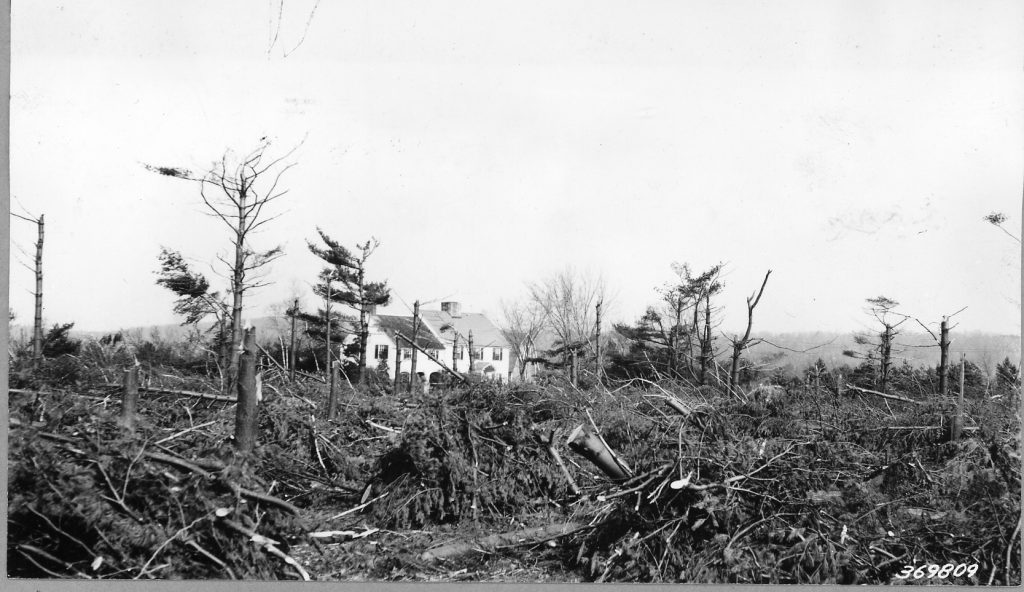
A farmhouse in Willimantic, Conn. among acres of blowdown after the hurricane of 1938. Photo courtesy of the US Forest Service
Energize
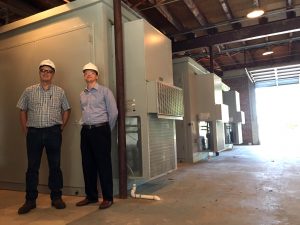
NextEra site manager Ben Pierce and project manger Jeff Plew at the company’s new “grid-scale” battery array on Cousins Island in Maine’s Casco Bay. Photo by Fred Bever for Maine Public
We’ve reported on the need to find storage for the extra energy that is sometimes produced by wind or solar plants to conserve it for other times when the sun isn’t out and the wind’s not blowing.
Giant “grid scale” batteries are one way to store that energy, and they’re getting cheaper and more sophisticated. Maine Public Radio’s Fred Bever has more.
For more stories about the growing role of renewable energy in our region, check out the New England News Collaborative series, “The Big Switch.”
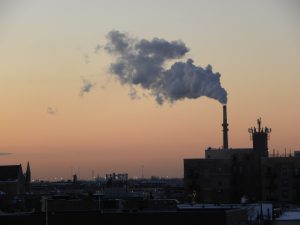
The RGGI program follows a cap-and-trade model. Companies bid for trade-able credits that allow them to release a limited amount of carbon into the atmosphere. Photo by nathanmac87 via Flickr
Earlier this month, The nine states of the Regional Greenhouse Gas Initiative (RGGI) announced a plan to cut power plant emissions by an additional 30 percent between 2020 and 2030. The move is being hailed by environmental groups as one of the biggest efforts taken by states since President Trump pulled the United States out of the Paris Climate Agreement.
However, the negotiations did include a push and pull between some New England States that wanted deeper emissions cuts, and Mid-Atlantic states that run on a different energy mix.
Our guest Katie Dykes is chair of the Public Utilities Regulatory Authority in Connecticut, and chair of the Board of Directors of the Regional Geenhouse Gas Initiative.
Hurricanes at Home
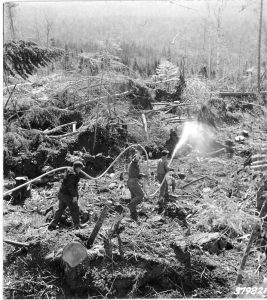
Workers with the CCC wet down hurricane slash in New Hampshire’s White Mountains. With so much lumber on the ground, fires were a major concern. Photo by the United States Forest Service
Hurricane Harvey marks America’s biggest rain event and one of the most destructive natural disasters in history.
Here in New England — while Hurricane Irene and Superstorm Sandy caused major damage — the worst storm to hit our region came without warning on September 21, 1938.
This hurricane hit Long Island first, and continued up the Connecticut Valley, plowing through Western Massachusetts and Vermont in a matter of hours.
The storm took 600 lives, and destroyed a thousand square miles of forestland. That environmental damage is the focus of the book Thirty Eight: the Hurricane That Transformed New England — out in paperback on September 21. We’re joined by author Stephen Long.
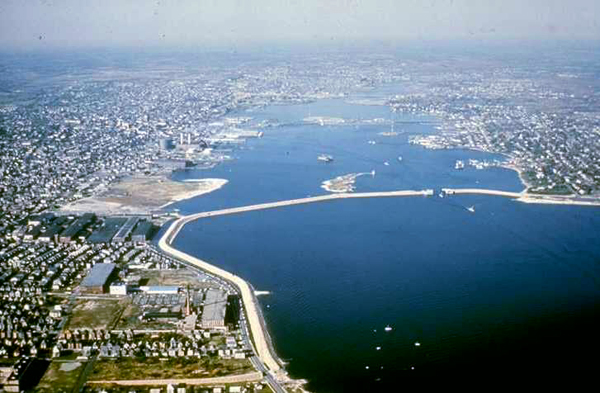
Aerial view if the New Bedford Hurricane Barrier, New Bedford, Mass. Photo courtesy of the US Army Corps of Engineers
After getting slammed by hurricanes several years in a row, New Bedford, Massachusetts built a massive barrier across its valuable harbor in the 1960s. But as the climate changes, city leaders know the wall can only hold back the sea for so long. As part of the series “Climate Change in Massachusetts,” WBUR’s Lisa Mullins reports.
The Hills are Alive…
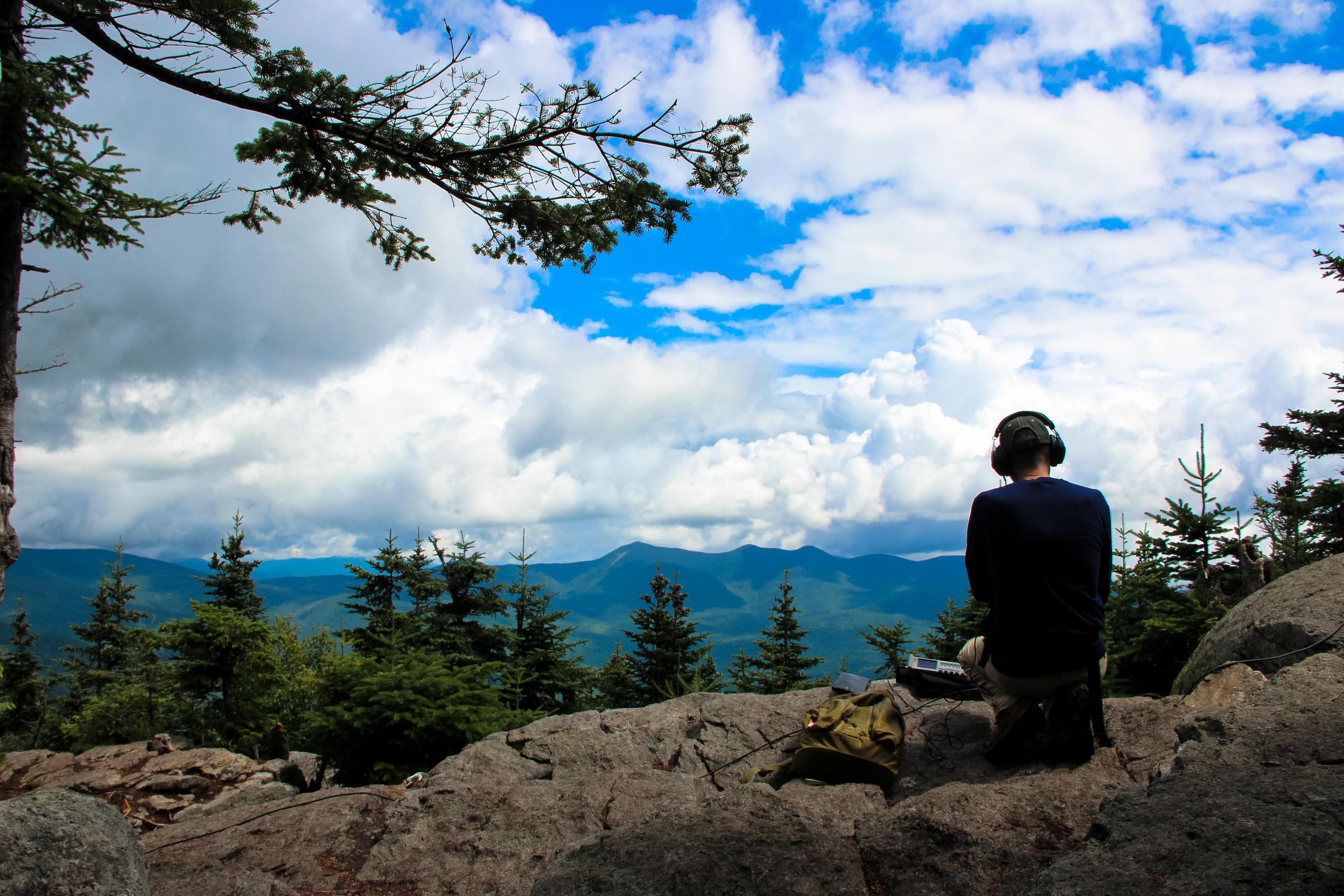
Steve Wilkes recording on the summit of Mt. Tecumseh in the White Mountain National Forest. Photo by Sean Hurley for NHPR
Steve Wilkes is a drumming professor at Berklee College of Music in Boston. He’s also a former member of Blue Man Group and has toured the world with The Empire Brass Quintet. But for his latest gig, Wilkes won’t be making music. Instead, he’s recording the sounds of the forest and compiling the first ever audio map of the White Mountains.
New Hampshire Public Radio North Country reporter Sean Hurley joined Wilkes on a recent sound-gathering trip.
You can listen to all of Wilkes’ recordings and track his progress at heartheforest.org.

Competitors imitate moose mating calls at the North Country Moose Festival. Photo by Chris Jensen for NHPR
Not all of the sounds of the forest are soothing, as reporter Chris Jensen learned when he visited the North Country Moose Festival, held last weekend in the adjoining towns of Colebrook, New Hampshire and nearby Canaan, Vermont.
He sends an audio postcard from the festival’s moose calling competition.
About NEXT
NEXT is produced at WNPR.
Host: John Dankosky
Producer: Andrea Muraskin
Executive Producer: Catie Talarski
Digital Content Manager/Editor: Heather Brandon
Contributors to this episode: Fred Bever, Lisa Mullins, Lynn Jolicoeur, Sean Hurley, Chris Jensen
Music: Todd Merrell, “New England” by Goodnight Blue Moon
We appreciate your feedback! Send praise, critique, suggestions, questions, story leads, and recordings of your sexiest moose calls to next@wnpr.org.
